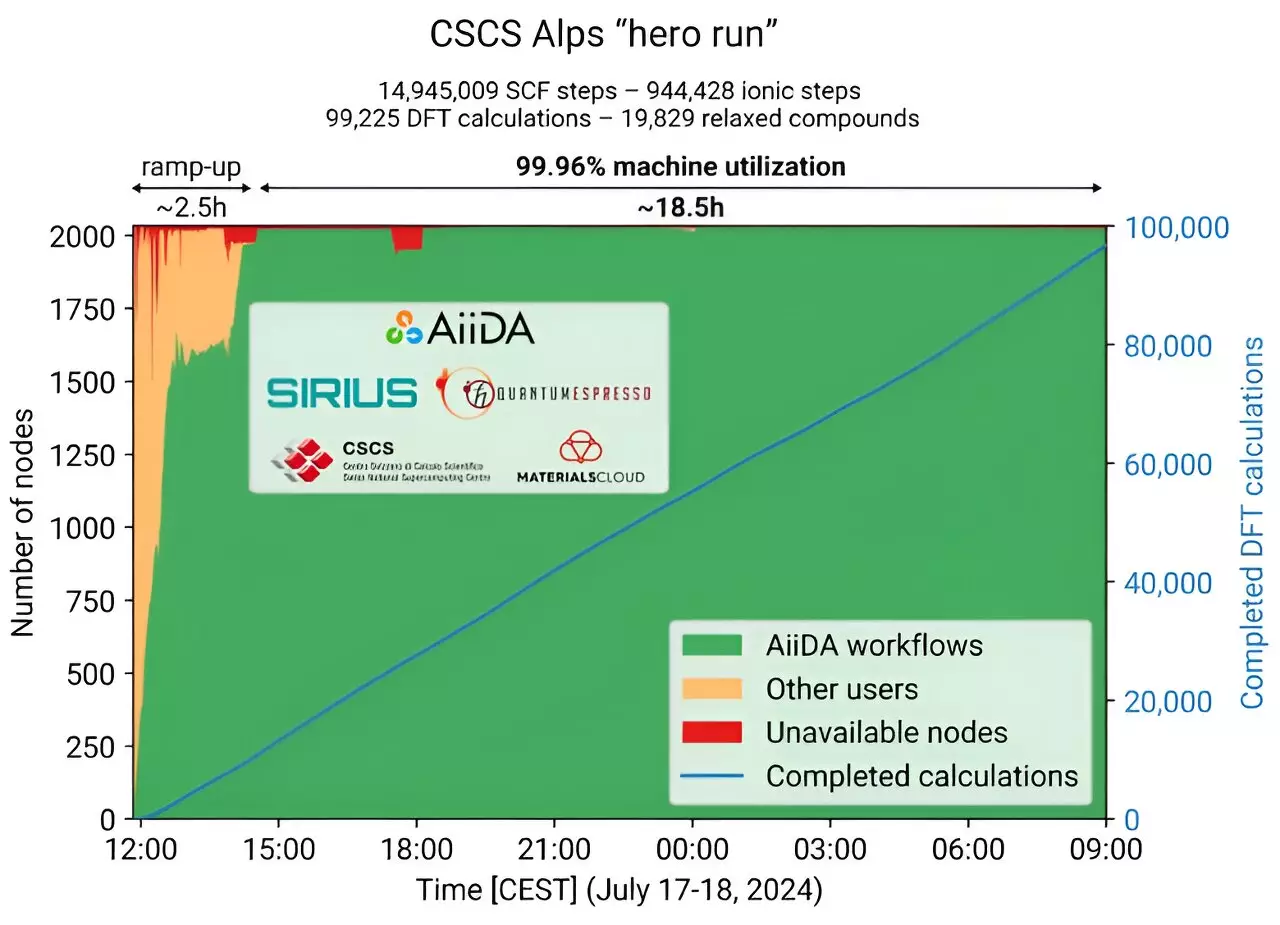In a remarkable display of technological prowess, a dedicated team from the Swiss National Center of Competence in Research (NCCR) MARVEL embarked on an extensive computational project that would showcase the capabilities of the newly operational Alps supercomputer. Taking place over a period of approximately 20 hours and fueled by countless cups of coffee, this marathon represented not just a milestone for Swiss computing infrastructure but also a significant advancement in computational materials science. Officially inaugurated on September 14, 2024, the Alps supercomputer has positioned itself among the most potent computational machines worldwide, thanks to its advanced architecture primarily housed at the Swiss National Supercomputing Center (CSCS) in Lugano.
The Alps supercomputer stands as a beacon for cutting-edge computational facilities, boasting a geo-distributed infrastructure that enhances its operational capabilities. The CSCS enabled select research teams access to this remarkable machine during its acceptance phase, but one group stood out—Dr. Giovanni Pizzi’s team from the Laboratory for Materials Simulation (LMS) at the Paul Scherrer Institute (PSI), directed by Nicola Marzari. This particular team employs innovative computational techniques in their search for breakthrough materials applicable across various industries, from energy storage to electronics.
With their access to the Alps supercomputer, the researchers aimed to exploit its immense computational resources to run high-throughput simulations that could potentially revolutionize materials discovery processes.
The Challenge of High-Throughput Computation
The ambitious endeavor, often referred to in the computational science community as a “hero run,” specifically focused on leveraging the Alps supercomputer’s capabilities for high-throughput calculations. Such computations involve evaluating thousands of material structures that can be analyzed in parallel, providing invaluable insights into material properties. The systematic approach allows for the identification of promising candidates for advanced applications, an essential aspect as global industries continually seek innovative alternatives to existing materials.
The team, including Marnik Bercx, Michail Minotakis, and Timo Reents, sought to integrate AiiDA—a powerful open-source tool designed to streamline materials science workflows—with the Alps supercomputer for optimal performance. By doing so, they were not only aiming for computational efficiency but also validating the interoperability between cutting-edge computing resources and sophisticated software solutions designed for materials science.
The Role of AiiDA in the Calculation Process
AiiDA plays a crucial role by managing complex workflows that typically accompany extensive computational tasks, automating the process of file preparation, job submission, and outcome retrieval. This advanced software practically oversees the entire operation, ensuring that once calculations are completed, data can be parsed, stored, and used for subsequent analyses. As noted by Bercx, the endeavor was designed to maximize the utilization of nodes across the supercomputer, achieving a staggering level of efficiency that is rarely seen even among leading computational facilities globally.
The actual computations relied on an enhanced version of Quantum ESPRESSO, a well-regarded code for materials simulations, optimized through the Sirius library developed within NCCR MARVEL. This synergy between software and hardware permitted the effective engagement of GPU capabilities on the Alps machine, which is essential for the computational intensity involved in simulating material properties.
By the end of the rigorous 16-hour run, the team accomplished nearly 100,000 simulations focused on the properties of over 20,000 crystal structures. The results, which confirmed various electronic properties and geometric configurations, will soon be made publicly accessible through the Materials Cloud, an open repository for research and data sharing. Such accessibility promises to facilitate collaboration and transparency within the scientific community—a core principle of FAIR (Findable, Accessible, Interoperable, and Reusable) data practices.
As underscored by Pizzi, the results not only demonstrated the Alps supercomputer’s extraordinary computational potential but also highlighted the operational excellence of AiiDA, successfully filling the supercomputer’s entire capacity during the trial. The implications of this outcome are vast; not only does it represent a qualitative leap in computational materials science, but it also heralds a new era of research potential that could lead to the discovery of advanced materials for numerous applications, including renewable energy and next-generation electronics.
The collaboration between state-of-the-art computational facilities such as the Alps supercomputer and advanced software tools like AiiDA underscores a pivotal moment in the journey towards material discovery. This innovative intersection of technology, science, and collaboration lays a strong foundation for future breakthroughs in material sciences that may redefine our approach to solving pressing global challenges.


Leave a Reply